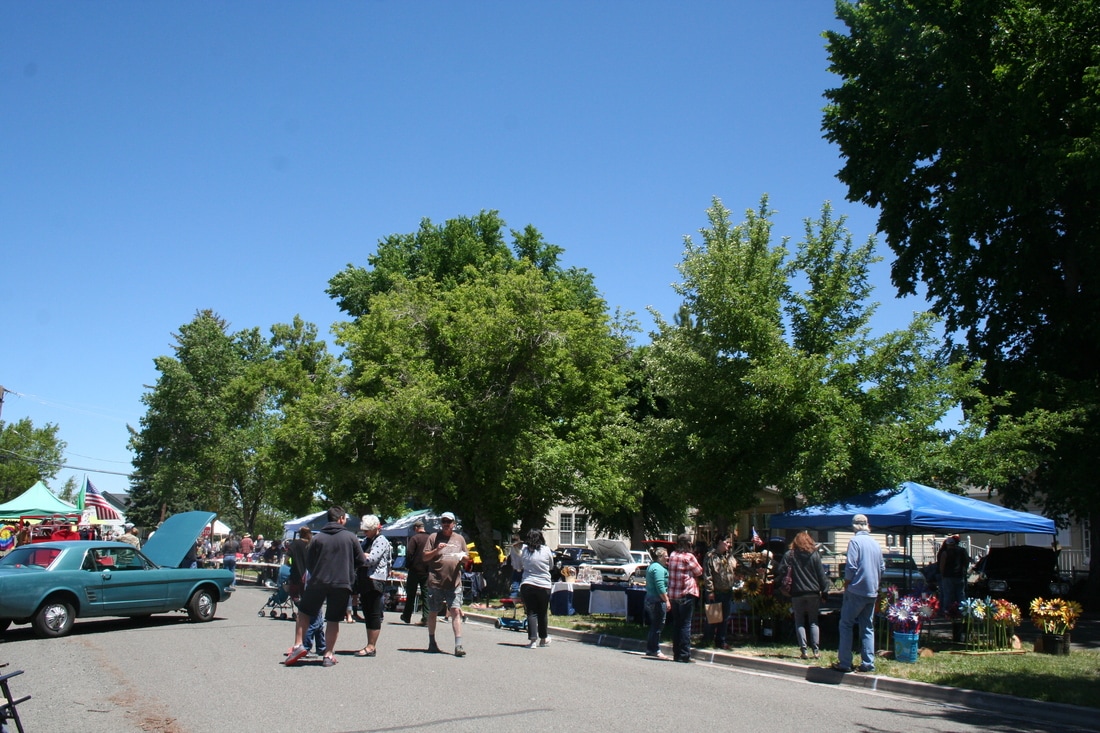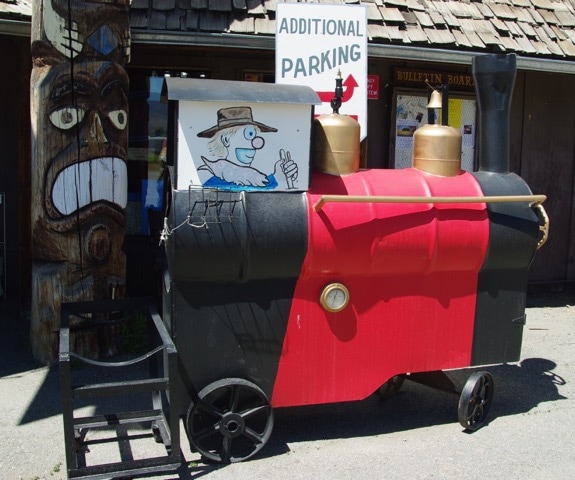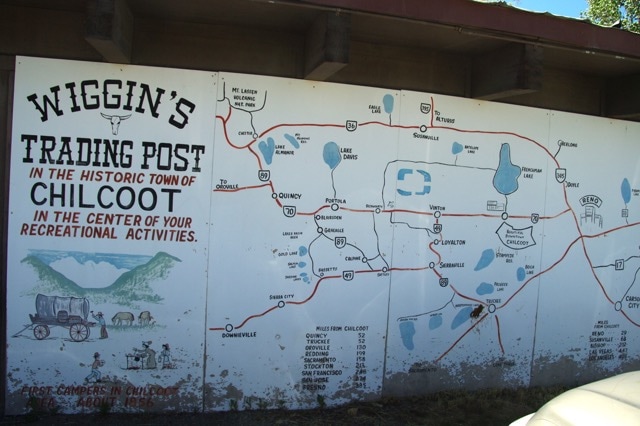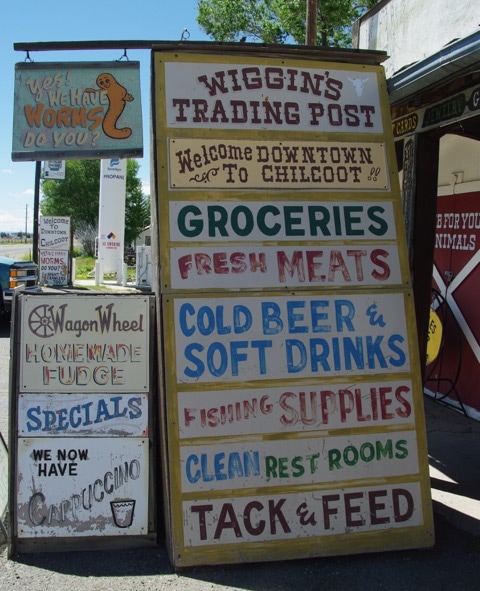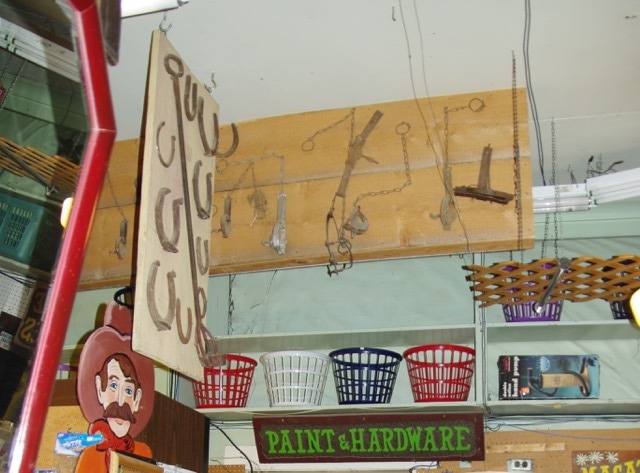|
Due to fire danger green waste, brush, etc. is not accepted at the Sattley Transfer Station as of June 26, 2017. Green waste, brush, etc. will not be accepted at the Sierra City Transfer Station as of July 6, 2017. It may be taken to Loyalton Landfill on Saturdays, Sundays and Mondays 10 am to 4 pm. Questions should be directed to the Department of Public Works at 530-289-3201.
0 Comments
In addition, always make sure your recyclables are EMPTY, CLEAN and DRY before tossing them in the recycling container. Remember:
By adopting Empty. Clean. Dry., you can do your part to help reduce materials contamination at the curb so that recyclables are repurposed into new materials as intended. “When it comes to being more sustainable, our customers want to do the right thing and we are here to help them,” said Pete Keller, vice president of recycling and sustainability at Republic Services. “As you plan your holiday picnics and barbeques, consider ways to minimize the impact your activities might have on the environment. We want everyone to have a safe and environmentally responsible Fourth of July.” Known as the Blue PlanetTM sustainability initiative, Republic Services is defining its approach to corporate social responsibility through reduced emissions from operations, materials management, safety, community engagement and employee growth opportunities. To view Republic’s Sustainability Report, visit www.republicservices.com/sustainability. About Republic Services Republic Services, Inc. (NYSE: RSG) is an industry leader in U.S. recycling and non-hazardous solid waste. Through its subsidiaries, Republic’s collection companies, recycling centers, transfer stations and landfills focus on providing effective solutions to make proper waste disposal effortless for their commercial, industrial, municipal, residential and oilfield customers. We'll handle it from here.TM, the brand’s promise, lets customers know they can count on Republic to provide a superior experience while fostering a sustainable Blue PlanetTM for future generations to enjoy a cleaner, safer and healthier world. For more information, visit the Republic Services website at RepublicServices.com. "Like" Republic on Facebook at www.facebook.com/RepublicServices and follow on Twitter @RepublicService. ### Media Tracy Skenandore (702) 217-0414 Tskenandore@republicservices.com Sacramento – On July 1, 2017, the tax rate on tobacco products other than cigarettes will increase from the current rate of 27.3 to 65.08 percent of the wholesale cost. In November 2016, California voters approved Proposition 56, which increased the excise tax rate on cigarettes, and expanded the definition of “tobacco products” to include little cigars, tobacco and nicotine intended for human consumption, and electronic cigarettes sold in combination with nicotine. In keeping with California law, the Board of Equalization (BOE) adjusts the tobacco tax rate annually during its April meeting. In accordance with Revenue and Taxation Code section 30123(b), the BOE is required to annually calculate a tax rate on tobacco products that is equivalent to the combined rate of tax imposed on cigarettes ($2.87 per pack of 20, or $0.1435 per cigarette). The tobacco products tax is imposed upon the first distribution in California, paid by the licensed tobacco products distributor, and based on their wholesale cost prior to any discounts or trade allowances. The fiscal year 2017-18 Tobacco Products Tax Rate is based on the wholesale premium brand cigarette price as of March 1, 2017, as published by the Tobacco Merchants Association. The new tobacco products tax rate will stay in effect through June 30, 2018. Other tobacco products include, but are not limited to, cigars, little cigars, smoking tobacco (including shisha), chewing tobacco, snuff, nicotine delivery devices (for example, e-pipes, vape pens, e-hookahs) sold in combination with any liquid or substance containing nicotine, and any products containing, made of, or derived from any amount of tobacco or nicotine that is intended for human consumption. Nicotine delivery devices sold independently, without nicotine, are not subject to the excise tax. This includes any battery, battery charger, carrying case, or other accessory used in the operation of a nicotine delivery device. “Tobacco products” do not include cigarettes or any product that has been approved by the United States Food and Drug Administration for sale as a tobacco cessation product or for other therapeutic purposes (for example, nicotine patches). Additional information regarding the provisions of Proposition 56 is available online. For more information regarding cigarette and tobacco products taxes, read our Special Notice, visit our online Cigarette and Tobacco Products Tax Guide, or call the Customer Service Center at 1-800-400-7115 (TTY:711) weekdays from 8:00 a.m. to 5:00 p.m. (Pacific time), except state holidays. * * * * * The five-member California State Board of Equalization (BOE) is a publicly elected tax board that hears business tax appeals, acts as the appellate body for franchise and personal income tax appeals, and serves a significant role in the assessment and administration of property taxes. The BOE collects $60.5 billion annually in taxes and fees, supporting state and local government services. For more information on other taxes and fees in California, visit the California Tax Service Center. Note: This news release may discuss complex tax laws and concepts. It may not address every situation, and is not considered written advice under Revenue and Taxation Code section 30284. Changes in law or regulations may have occurred since the time this news release was written. If there is a conflict between the text of this news release and the law, decisions will be based upon the law and not this news release. For specific help, please contact the BOE at 1-800-400-7115. ### State Schools Chief Torlakson Praises New State Budget with Increases for Education Funding6/29/2017 SACRAMENTO—State Superintendent of Public Instruction Tom Torlakson today thanked Governor Brown for signing a 2017–18 state budget that increases funding for kindergarten through twelfth grade public schools, after school programs, early education and child care, and teacher recruitment and training. “The Legislature and Governor clearly showed their strong and ongoing support of high-quality public education in California,” Torlakson said. “When we invest more in our students, we help them succeed on their way to 21st century careers and college. “This budget continues the strong growth in what I call the ‘California Way,’ where legislators, the Governor, education groups, the business community, and others are working closely together to keep improving our education system.” The Legislature approved the budget on June 15, the date required by the State Constitution. Governor Brown’s signature on Tuesday means the new state funding plan starts on July 1. California has the nation’s largest public school system with more than 6.2 million students at nearly 10,000 public schools. Overall funding in Proposition 98—the voter-approved Constitutional guarantee for a minimum level of education funding—will go up to $74.5 billion, nearly $3 billion more than the current budget. The budget also includes:
The California Department of Education is a state agency led by State Superintendent of Public Instruction Tom Torlakson. For more information, please visit the California Department of Education’s Web site or by mobile device. You may also follow Superintendent Torlakson on Twitter, Facebook, and YouTube. Reservations are required.
EMS and BRN CEs available through Nor-Cal EMS (8 hours = 8 CEs) Just as CPR helps you assist an individual having a heart attack — even if you have no clinical training — Mental Health First Aid helps you assist someone experiencing a mental health related crisis. In the Mental Health First Aid course, you learn risk factors and warning signs for mental health and addiction concerns, strategies for how to help someone in both crisis and non-crisis situations, and where to turn for help. In this 8 hour course you will learn how to apply the Mental Health First Aid action plan in a variety of situations, including when someone is experiencing: Panic attacks Suicidal thoughts or behaviors Non suicidal self-injury Acute psychosis (e.g., hallucinations or delusions) Overdose or withdrawal from alcohol or drug use Reaction to a traumatic event Time: 8am to 5pm Wednesday June 28, 2017 Location: New Loyalton Museum/Auditorium (next to City Hall behind Golden West Saloon) 605 School Street Loyalton CA 96118 Interested in joining Pacific Southwest Regional (and renowned) ecologist Hugh Safford for all all-day fieldtrip focusing on the geologic history of the northern Sierra Nevada, the geologic sources of serpentinite and the effects that serpentinite has on the vegetation that grows on it? Here’s the perfect opportunity! For more information and to register: www.friendsofthechicostateherbarium.com/eventsviewcalendar/ Introduction to the Serpentine Ecosystem
AUG 10 Native Bees as Pollinators
Jack is shown with the new patriotic prizes to be awarded those winning entries in Loyalton's 4th of July parade, to be held the 4th of July at 9 a.m. to stage along RR Avenue. Come be a part of the fun!
Yoga Alliance from the Avahana School of Yoga is coming to Calpine. Sarah is requesting information for residents interested in attending this class. Description: Encouragement of a deeper mind-body connection through sustained postures with attention to basic alignment, mediation, breath work and yogic philosophy. Classes will be designed around building to peak poses, specific body part therapeutics, gentle flow and mediation with the goal to stretch and strengthen the mind-body connection. Variations will be given to encourage students to practice at their own level. Investment: $10/class If you are interested in taking this class there are 2 options she is considering. Depending on the most interest is the class she will set up. First option is Wed Evenings from 6-7:30pm. Second option is Thurs Morning from 9 – 10:30 am. Class will be held in the Calpine Community Building Gym. Please email Sarah Johnstone @ sjohnstone14@gmail.com and let her know what class best fits you and again depending on demand is the class that she will give. WASHINGTON, DC - Kids learn how to read in school, but they learn the love of it at home, according to education advocate David Bruce Smith. "In the formative years, it is important that parents and grandparents read to their children. It teaches them to appreciate a good story. In later years, take them to the library and let them pick books that have a special appeal for them," he suggests. Smith is co-founder of the Grateful American Book Prize, an award-which those who know him-say reflects his love of good reads and-for history. He partnered with the former chairman of the National Endowment for the Humanities, Dr. Bruce Cole, to create the Prize. "In this digital age, fewer and fewer of our children know the historical origins of the United States. Our aim is to show them how a story can "send" them on fascinating, exciting and adventurous journeys whenever they want. The idea is to encourage young people to learn more-with the hope that they will mature into responsible and productive citizens." says Smith. The first two books to win the Prize in 2015 and 2016 - Like a River and The Drum of Destiny - did just that, he says. "And now we are in the midst of a hunt for the 2017 Grateful American Book Prize, which is open for submissions through July 31." According to Smith each of those novels was an excellent choice for kids. When Kathy Cannon Wiechman won for Like a River: A Civil War Novel, Smith said: "it is an exemplar of what the Prize is all about-to encourage authors and publishers to produce fiction and nonfiction that accurately depict the past as a means of engaging young readers in American history. Like a River is a page-turner about the plights of a pair of teens-on the battlefield--caught up in the conflict between the states. To call it riveting is a disservice. The book rouses the emotions of its readers in a way that leaves them wanting to learn more about that critical era in the evolution of the country. It goes beyond the dry retelling of the Civil War that often puts students to sleep at their desks during history class." Chris Stevenson's The Drum of Destiny is the tale of a boy on his way to join the American Revolution's Continental Army. The author says "by reading Drum of Destiny, young readers can learn about history without realizing they are learning about history. Most history textbooks are written with the idea of teaching kids facts they can memorize so they can then take a test. This method misses the most important aspects of history. The real life stories, the reasons behind the facts, and the character of our country's founders are where the real learning is discovered." Smith also recommends other books that might have summer appeal for boys and girls:
LOYALTON MOBILE HOME PARK was a topic during public comment at Sierra County Board of Supervisors’ meeting held in Loyalton on Tuesday, June 20th. From the audience Eileen Benson asked the Board why after two months nothing had been done in the trailer park and all of the egregious violations. Board Chair Peter Huebner stated they are working on it every day, but everything takes time. Benson said more people are moving in, adding it was “outrageous” what was going on and has been for 10 years. Although Board member Lee Adams stated public comment was only for the audience to make a statement, the Board allowed Director of Public Works Tim Beals to make a department head report on it. Beals said a lot of discussion and considerable effort by the board has been going on in the last couple months. He stated they contacted and met with Liberty Utilities. They are working with the City of Loyalton on different ways to get payment on water bills. Beals said they’ve had meetings with Housing and Community Development (HCD). He stated the permit was still in suspended status and has not been revoked. Beals also said there have been meetings with a number of people in the park, and enforcement actions are being prepared and ready to be implemented. He concluded by stating this is a time consuming issue, but there is a lot going on.
Sierra County announces Vehicle Disposal Amnesty Weekend Saturday, Sunday, and Monday, July 1 through July 3, 2017. This means that if you have a junk vehicle or parts of a vehicle to dump, it can be disposed of at the Loyalton Landfill during open hours (10 am to 4 pm) on Saturday, July 1 or Sunday, July 2, 2017 with no disposal fee. Travel trailers and mobile homes will not qualify for amnesty. All liquids must be removed from the vehicle prior to disposal. Costs of hauling junk vehicles to the landfill are the responsibility of the owner/disposer. Vehicles are not accepted at any of the County transfer stations, and pick up services are not offered.
Normal vehicle disposal fees range from $90.00 for a standard vehicle or light truck to $125 for larger trucks. Questions regarding disposal of vehicles and vehicle amnesty weekend should be directed to the Department of Public Works at 530-289-3201. SACRAMENTO - Today, Assembly Republican Leader Chad Mayes (Yucca Valley) issued the following statement in response to the passage of California’s 2017-18 state budget: “Every state budget has parts you like and parts you don’t – this budget is no different. It includes an innovative Republican proposal that will lift people up and give impoverished Californians the freedom to achieve their dreams. “On the other hand, it doubles down on the largest gas tax increase in California history and continues to raid transportation funds. This budget will also return the state to deficits in just a few years.” Assembly Budget Committee Vice Chair Obernolte Responds to Passage of 2017-18 State Budget SACRAMENTO - Today, Assembly Budget Committee Vice Chair Jay Obernolte (R-Hesperia) issued the following statement in response to the passage of California’s 2017-18 state budget: “In terms of overall state expenditures, this is a fairly responsible budget. The State is increasing spending by about three percent, which is roughly equivalent to the rate of inflation. However, the Department of Finance projects a return to budget deficits of $1 billion in just two years. If the economy slows, Sacramento may look back on this moment and regret the decision to not rein in State spending. “Unfortunately, the budget is also full of broken promises. “This spending plan raids our transportation funds, sending 30 percent of money from the new gas tax to projects unrelated to roads. Also, voters who supported Proposition 56 were promised that the increase in tobacco tax would be used to expand low-income Californians’ access to health and dental care. Regrettably, this budget diverts more than half of that money to the General Fund. Californians deserve better.” Assemblyman Jay Obernolte represents the 33rd Assembly District, which includes the San Bernardino County communities of Adelanto, Apple Valley, Baker, Barstow, Big Bear City, Big Bear Lake, Big River, Crestline, Fort Irwin, Hesperia, Johnson Valley, Lake Arrowhead, Lenwood, Lucerne Valley, Needles, Oak Hills, Phelan, Running Springs, Silver Lakes, Trona, Twentynine Palms Base, Twin Peaks and Victorville. 2017-18 State Budget Offers Record Spending, Less Transparency Historic $183.2 billion budget ignores growing small business uncertainty FOR IMMEDIATE RELEASE National Federation of Independent Business/California Contact: Shawn Lewis (916) 342-9315; Shawn.Lewis@NFIB.org Follow: @NFIB_CA and on Facebook 2017-18 State Budget Offers Record Spending, Less Transparency Historic $183.2 billion budget ignores growing small business uncertainty SACRAMENTO, Calif., June 15, 2017 – Following the passage of the 2017-18 state budget, NFIB California State Executive Director Tom Scott issued the following statement on behalf of our 22,000 dues-paying small business members: “At a time when small businesses across the state are seeing their budgets tighten with rising minimum wage, transportation, and health care costs, today the legislature passed yet another historic spending plan, totaling a record $183.2 billion. Although this budget continues to make important investments into our state rainy day fund, it more broadly ignores the underlying uncertainty of our small business economic engine with record spending and zero budget reforms or transparency. Small business owners and all taxpayers continue to pay more but get less in return. Most recently, Sacramento treated working families like ATMs by raising their gas and car taxes, yet we see little, if any, new spending to expand or build new roads. “This budget also decimates many taxpayer rights by gutting the elected Board of Equalization of its authority to hear tax appeals, which will leave our small business owners no independent recourse to dispute egregious tax bills and penalties. It is very difficult to have faith in this state budget when the process has become completely polluted with trailer bills such as this which have no place in the budget, and should instead be discussed in open policy committee proceedings.” ### For more than 70 years, the National Federation of Independent Business has been the Voice of Small Business, taking the message from Main Street to the halls of Congress and all 50 state legislatures. NFIB has 350,000 dues-paying members nationally, with over 22,000 in California. NFIB annually surveys its members on state and federal issues vital to their survival as America's economic engine and biggest creator of jobs. To learn more visit www.NFIB.com/california TOUR DE MANURE, Sierra Valley’s Metric Century of 60, 42 & 30 mile routes with a ranch-style BBQ at the finish will be held in Sierra Valley on June 17th as the 9th annual.
Doug Read is called the brain child of this event-- maybe the "father". Doug has been a key player in the Great Race which is a huge fundraiser for the Placer Co. Nordic Search and Rescue for decades and understands how to de-velop and manage an event. He brought that to the Sierraville Fire Department where he is an active volunteer. During a brain storm session as to what the fire department might do for a fundraiser, Doug responded by suggesting a bike ride (not a race) that featured the environment and financial backbone of the valley-ranching/farming. According to volunteer Rick Maddalena, “I think he even surfaced the name at that session. Laura Read surfaced as the promoter and event registrar, Jay Huebert created the logo, Jeff McCollum and Dan Wentling became the logistics people, Karla Pombo took over finances, and Tami McCollum went on point as overall coordinator following Doug's counsel. Shannon Tucker took over management of the food.” Under further question, Rick stated, “If I were to name the leaders I would say Doug is the ‘father’ and Tami is the ‘mother’ of this child.” Annually the event organization has been "tuned" using the Incident Command System to identify task to be accomplished, coordination needs with Beckwourth and Loyalton Fire, the East Sierra Valley Chamber of Commerce, other partners and vendors, and day of event volunteer assignments. Although it is hosted by the Sierraville Fire Department, volunteers come from all of the Sierra County communities (e.g. Plumas Bike Club, 4-H, Lost Marble Ranch, and East Sierra Valley Chamber) and Sattley and Calpine Fire Departments. Proceeds from the event have been used to buy equipment to support the volunteers (e.g. ladders, flashlights, tow chains, rescue winches) and updating the fire station including installing large capacity electric garage door openers and fixing some long standing electrical issues. Sierraville Fire is also partnering with the SCFPD#1 and the USDA Rural Assistance program to replace the tired Rescue Truck positioned at the Sierraville Station. The grant/ loan package from the USDA has been obligated and specifications for the truck are being refined and circulated for vendors. About 20% of the price of the new truck will come from Tour-de-Manure proceeds. The new truck will carry the "Tour de Manure brand" on it's hind quarter. Jay Huebert, who manages the bike stop at the bottom of Smithneck Road, say's “I've been herding cows much of my life. Now I'm herding bicyclists. I find that they leave less of a mess on the road but are much more likely to share their opinions." Agencies Involved: Plumas County Sheriff’s Office and Plumas County Search and Rescue
Missing Person: Teresa “Terry” Blake, 58 of Woodland CA On Monday, June 13, 2017 the body of Teresa Blake was located along the bank of the Middle Fork of the Feather River by search and rescue personnel. Blake went missing on June 4th after she told her family she was going fishing and left the resort she and her family were staying in. Her body was discovered after Search and Rescue located some personal items of Blake’s in the area of the river and continued their search. Her body was found in some willows along the river’s edge which was approx. three quarters of a mile from where her car was located on June 5th. An autopsy has been scheduled to determine the exact cause of death. At this time no foul play is suspected. The Plumas County Sheriff’s Office would like to extend our condolences to the Blake Family. Gregory Hagwood Sheriff-Coroner By: Steve W Peay/Investigations Sergeant (By John Andrews, Centennial Institute Fellow) As Westerners who love liberty, limited government, and the land, it’s high time we stop letting the bicoastal progressives claim heartland conservatives and the GOP want to despoil the environment. What lot of bovine scatology. Conservatives don’t care about the earth? Please. No one cares more about conserving America’s natural and spiritual heritage than we do. The Luddite left has forgotten American history, if they ever knew any. It was Republican President Teddy Roosevelt who established our National Parks and National Forests by setting aside 150 million acres to be conserved and used in a sustainable manner. It was Republican President Richard Nixon who established the Environmental Protection Agency, to conserve clean air, water, and land. I was there and I remember. I worked on that initiative. (TR was a little ahead of my time, however.) It was Republican President Ronald Reagan who committed the country to the Montreal Protocol, which is credited with conserving – in fact, saving – the Earth’s ozone layer, and which is still regarded as the most successful environmental treaty ever established. And it was Republican President George H.W. Bush’s Acid Rain trading program that achieved goals of substantial acid rain reductions by eliciting compliance from industry without endless lawsuits. In sum: For a century and more, it has been conservatives who led the most significant conservation efforts in the western United States. Yet extreme political interests and their media echo chamber relentlessly push the bogus narrative that conservatives don’t value a healthy, balanced, wisely stewarded environment. Indeed, they want to persuade everyone from schoolkids to supermarket shoppers to moviegoers that we’re out to trash the planet. That’s malicious moonshine. Conservatives can reclaim leadership on this issue that is so critical to the West by identifying actual environmental challenges facing our country and advocating for the most efficient solutions to address them. And it seems to me that you and I as Western conservatives are best positioned to pioneer such an approach, just because these environmental problems and proposed solutions have such a vital impact on our daily lives. The ethic of serving as responsible stewards of our land, mindful of generations long past and generations yet unborn, is at the very core of our region’s heritage. What’s to be done? Organize, strategize, mobilize, and engage. Get off the defensive and get back in the game to win. Not because it’s politically smart – though it is – but because it’s the right thing to do for this land we love. Who’s leading the charge? One new group that impresses me is called The Western Way. It’s an alliance of prominent figures on the center-right, dedicated to innovative, conservative environmental policies for the 21st century. They’ve proposed a common-sense framework for analysis, advocacy, and action, the Western Way Code, that cuts through the inflamed political rhetoric obstructing real solutions. The Code is refreshingly honest and straightforward: four simple steps
Whereas if we tense up, retreat behind polarized arguments, and let others define the debate, we’re left without a seat at the table. Classic self-sabotage. Enough of that! The dramatically changed political landscape of 2017 offers a perfect opportunity for Republicans and the center-right to start being environmentally proactive again and advance constructive, conservative solutions. I’m excited about the potential of The Western Way as a new force urging conservatives to “get in the arena” (as Teddy Roosevelt put it) and help build this 21st century for the benefit of all Americans. I’m in. Are you? Please take a few minutes to check out TheWesternWay.org today, and join us. So much depends on you and me. We’ve got a country to save. John Andrews, for decades an influential voice in the Colorado political debate, is now one of his state's Christian conservative elder statesmen. He has led five think tanks, most recently the Centennial Institute at Colorado Christian University, and was the originator of the Western Conservative Summit, Backbone Radio, and the Head On TV debates. Andrews was previously President of the Colorado Senate, chairman of the State Policy Network, and director of TCI Cable News. He was a speechwriter for President Richard Nixon; an education appointee under Presidents Ronald Reagan and George W. Bush; founder of the Independence Institute and co-founder of State Policy Network; and Republican nominee for Governor of Colorado in 1990. to Strip Taxpayer Rights SACRAMENTO - George Runner issued the following statement today in response to sweeping budget legislation that would strip the Board of Equalization of nearly all its current functions: "Taxpayers must be warned: the so-called 'Transparency and Fairness' legislation announced today by the very politicians who just voted to raise your gas tax, is neither transparent nor fair. "This last-minute budget power grab would strip California taxpayers of their right to bring their tax appeals before their elected peers. In its place the bill would establish yet another unelected and costly tax bureaucracy. "It's a sad but true reality: the only real alternative to an elected official is an unelected state worker. "The proposed changes go far beyond issues identified in recent audits, nearly all of which have been addressed and corrected by the Board. "Changes of this magnitude should not be rushed through the budget process, bypassing the deliberative process. Instead they should go through the normal policymaking process to allow public input." # # # George Runner represents more than nine million Californians as an elected member of the State Board of Equalization. For more information, visit www.boe.ca.gov/Runner. THE THIRD ANNUAL EVENT was held June 10th with historic logging equipment, classic cars, music and vendors along Main Street and Railroad Avenue. Smokey the Bear made an appearance too!
 THE GILDED DRIFTER in east Loyalton is the Victorian home next to the former Country Cookin'. Chelsea Johnson has totally renovated the house which contains 6 guest rooms with private and shared bath options and access to a fully stocked kitchen, library and summer house. There is now an open air dining area in the back.
A soft opening was held June 9th. Open House Receptions will be June 22 and 29th. Grand opening will be July 1st. Be sure and go by to welcome Chelsea! cWIGGIN'S TRADING POST, landmark of Sierra Valley and Gateway to Frenchman Lake recreation areas has sold to the Goodwin family.
Historic Wiggins Trading Post has been a vital part of Sierra Valley and Chilcoot for nearly 50 years. Shirley Wiggin is looking forward to retirement. We wish her the best! A reopening as "Goodwin's Fort Wiggins" will be held June 29th. May 30, 2017 By: Bob Williams Rural County Representatives of California (Chair) Tehama County Supervisor By the numbers, California is unequivocally rural. The 35 member counties within our organization, the Rural County Representatives of California (RCRC), represent more than half of the state’s total number of counties (58), and 55 percent of the state’s total land mass. Nearly 75 percent of California’s available water originates in the northern third of the state, and more than 70 percent of California’s U.S. Forest Service land resides in rural counties. Given this rural landscape, why do California’s rural counties continue to struggle? The answer – an unlevel playing field. California’s rural counties are often left behind, and left out. Two of the biggest examples of this unlevel playing field include access to broadband, and funding opportunities for disadvantaged communities. The lack of broadband access in California’s rural counties has led to substantial local economic setbacks, leaving California’s rural counties disconnected from opportunities and advancements realized by our urban brethren. Secondly, the utilization of the California Communities Environmental Health Screening Tool (CalEnviroScreen) in identifying California’s most disadvantaged communities when allocating financial resources excludes 30 of California’s 58 counties and the cities within from this funding source, many of those home to some of the most socioeconomically depressed communities in the state. Recent data highlights the widening of the rural-urban divide within our state, with California’s rural counties far exceeding the state average in both unemployment and poverty. Broadband connectivity, and access to grant funding for disadvantaged communities are immediate solutions to help bridge this gap, and narrow this urban-rural divide. The greater distances, lower population densities, and geographic diversity of California’s rural counties create unique obstacles, and for these reasons, ‘one-size-fits-all’ policies don’t work. RCRC’s member counties are encouraged by the discussion at the Democratic Convention in May, and we urge current and future State leadership to consider exploring mechanisms to improve rural connectivity, and allocate funding to truly disadvantaged communities. AAA: New teen drivers three times as likely to be involved in deadly crash WALNUT CREEK, Calif. (June 1, 2017) – Teens drivers love hitting the road instead of the books during their summer vacation. But it's important for young drivers to remember: too much summer relaxation could become a fatal distraction when they're behind the wheel. The period between Memorial Day and Labor Day is known as the “100 Deadliest Days” for teen drivers, a time when the average number of deadly teen driver crashes climbs 15 percent compared to the rest of the year. “Teen crashes spike during the summer months because teens are out of school and spend more time on the road,” said Mike Blasky, spokesman for AAA Northern California. "Parents are the front line of defense for keeping our roads safer this summer, and it all starts with educating teens about safety on the road and demonstrating good behavior.” Over the past five years, more than 1,600 people were killed in crashes involving inexperienced teen drivers during the 100 Deadliest Days. A new study from the AAA Foundation for Traffic Safety analyzed crash rates per mile driven for all drivers and found that for every mile on the road, drivers ages 16-17 years old are:
The number of teen drivers involved in fatal crashes increased more than 10 percent from the previous year, according to the National Highway Traffic Safety Administration’s (NHTSA) 2015 crash data, the latest data available. To reverse this trend, AAA urges parents to get involved and talk to their teens about the dangers of risky behavior behind the wheel. Three factors that commonly result in deadly crashes for teen drivers are: Distraction: Distraction plays a role in nearly six out of 10 teen crashes, four times as many as official estimates based on police reports. The top distractions for teens include talking to other passengers in the vehicle and interacting with a smart phone. Not Buckling Up: In 2015, the latest data available, 60 percent of teen drivers killed in a crash were not wearing a safety belt. Teens who buckle up significantly reduce their risk of dying or being seriously injured in a crash. Speeding: Speeding is a factor in nearly 30 percent of fatal crashes involving teen drivers. A recent AAA survey of driving instructors found that speeding is one of the top three mistakes teens make when learning to drive. TeenDriving.AAA.com has a variety of tools to help prepare parents and teens for the dangerous summer driving season. The online AAA StartSmart program also offers great resources for parents on how to become effective in-car coaches as well as advice on how to manage their teen’s overall driving privileges. About AAA Foundation for Traffic Safety: Established in 1947 by AAA, the AAA Foundation for Traffic Safety is a not-for-profit, publicly funded, 501(c)(3) charitable research and educational organization. The AAA Foundation’s mission is to prevent traffic deaths and injuries by conducting research into their causes and by educating the public about strategies to prevent crashes and reduce injuries when they do occur. This research is used to develop educational materials for drivers, pedestrians, bicyclists and other road users. Visit www.AAAFoundation.org. SACRAMENTO – California Attorney General Xavier Becerra announced that California was awarded a $53.25 million judgment yesterday against Dish Network after it engaged in a nationwide campaign of illegal telemarketing and made unwanted calls to thousands of people registered on the Do Not Call registry, many of them California residents. The ruling was made by Judge Sue Myerscough of the United States District Court for the Central District of Illinois. “As families gather around the dinner table each night, they shouldn’t be bombarded by unwanted telemarketing calls,” said Attorney General Becerra. “Congress established the Do Not Call list to empower consumers and prevent these calls. Dish Network chose to ignore the rules, repeatedly and intentionally violating state and federal telemarketing laws. That type of abuse of Californians guarantees that my team at the Department of Justice will prosecute the wrongdoers." The Court entered the judgment against Dish after a five-week bench trial. The Court also ordered robust injunctive relief requiring Dish Network to reform its telemarketing practices. California was joined by co-plaintiffs the federal government, North Carolina, and Ohio in this action. When he assumed office, Attorney General Becerra committed to protect consumers as a top priority. Since then, he has announced a $33 million multi-state settlement with Johnson and Johnson marketing over-the-counter medicines that failed to meet quality standards; a $586 million multi-state settlement with Western Union for wire fraud scams; and a record $18.5 million multi-state settlement with Target, in response to allegations that over 40 million customers had their payment card information compromised during the 2013 holiday season after the company failed to provide reasonable data security. The proposed state constitutional amendment would redistribute state senators, having them represent specific geographical areas, rather than seats apportioned by population. Gallagher, with other rural legislators and leaders, will hold a press conference in Sacramento today to introduce the bill authored by the Yuba City Republican. “This state is made up of distinct regions,” said Gallagher. “However, only two parts of the state (Los Angeles and San Francisco) have a final say. If they want something, other regions have very little ability to stop it. This amendment attempts to give an equal place at the table to all the regions.” Currently, both houses of the Legislature are decided by the majority. His amendment seeks to check and balance population representation similar to the federal model. State Sen. Jim Nielsen, Republican from Tehama County who represents this district, supports the amendment. Nielsen argues a United States Supreme Court ruling in 1964, Reynolds v. Sims, destroyed representation in the state. That decision established the “one-person, one-vote rule,” in which state legislative voting districts must be equal by population, according to the Cornell Law School Legal Information Institute. Prior to that, the senators were elected by county. The result of the ruling shifted California’s Senate representation to the growing urbanized areas of San Francisco and Los Angeles. According to the California State Legislature district map, nearly three quarters of Senate seats are near the two major metropolitan areas. Gallagher’s amendment would reapportion the state into eight geographical regions, each with five regional senators. State senators would represent areas as determined by a citizens redistricting committee. Less-populated counties, including Sutter, Yuba and Colusa, would join the Northern California Region along with 17 other counties. In contrast, highly populated Los Angeles County, would be a region unto itself. Yuba County Supervisor Andy Vasquez Jr., who will speak at today’s press conference with Gallagher, does not think this is an issue of rural versus urban communities. “People in San Francisco have a different perspective on things, and they dance to the beat of their own drum,” said Vasquez. “This is about fair and adequate representation. We are not looking for a fight. They (San Francisco) don’t have the right to enforce their morals or ethics on me.” Yuba County Supervisor Gary Bradford, also scheduled to speak at today’s press conference, agreed. “We live in a very diverse state with different needs and challenges,” said Bradford. “Often the state does a one-size-fits-all approach. There is no check and balance on what urban centers want.” Bradford said the federal model would allow for better representation in the state. One of the most notable groups concerned with representation, the State of Jefferson movement, is in support of the amendment. Mark Baird of Siskiyou County, who spoke on behalf of the organization, supports Gallagher’s efforts, but he is skeptical of the amendment’s future. “I wish him (Gallagher) success and luck,” said Baird. “It’s a try, so I can’t fault a legislator for trying to do something about it. At least someone is waking up.” Nielsen said it is not out of the question for representatives across the aisle to lend support to the amendment. “There is always a hope and a prayer,” said Nielsen. “These representatives have shown sympathy for other causes important to rural communities.” Nielsen cites bipartisan support for issues like water, criminal justice and public safety where rural and urban centers worked together. Gallagher said the issue might gain traction because of places like the Inland Empire and the Central Valley that are also under-represented. “It is a heavy lift, but I want to open up the discussion,” said Gallagher. “I don’t know if this amendment in its present form is the end product. If this evolves the idea of better representation for the state, that is my goal.” The California Department of Fish and Wildlife (CDFW) is now accepting proposals for habitat restoration projects within the California watersheds most impacted by unregulated cannabis cultivation. Contingent on the Budget Act for Fiscal Year (FY) 2017-2018, a total of $1.5 million in Timber Regulation and Forest Restoration funds will be made available through CDFW's Cannabis Restoration Grant Program. The program will focus on the North Coast watersheds extending from Sonoma County to the Oregon state line, as they have been most heavily impacted by cannabis cultivation. "Existing damage to our watersheds due to unregulated cannabis cultivation is at crisis levels in terms of threats to habitat for aquatic and wildlife species," said CDFW Director Charlton H. Bonham. "While many grow sites have been abandoned or shuttered, the infrastructure and ongoing damage remains. We are poised to initiate this critical and missing step in the process of decommissioning unwanted grow sites." California's fish and wildlife are severely impacted by unregulated cannabis cultivation practices including unlawful water diversions for irrigation, conversion of lands, and prohibited herbicides, rodenticides and other environmental contaminants. The most impacted areas require immediate action. Assembly Bill 243 (Wood, Medical Marijuana) provides direction to CDFW to restore watersheds impacted by cannabis cultivation. "Our beautiful, pristine North Coast forests have become havens for these rogue grow sites," said Assemblymember Jim Wood, who represents five of the county areas eligible for these grants. "These sites have been ravaged by lethal chemicals, often-banned rodenticides which are used to keep animals away, but remain in the ground and eventually run off into rivers and streams, destroying everything in their path, including endangered fish species such as coho salmon. I am grateful that the Governor and CDFW are making these funds available for this much-needed cleanup." The FY 2017-2018 Proposal Solicitation Notice, application instructions and other information about the Restoration Grant Program are available at wildlife.ca.gov/Conservation/Watersheds/Cannabis-Restoration-Grant. Proposals must be submitted online at https://soar.resources.ca.gov/. The deadline to apply is Friday, June 30, 2017 at 4 p.m. Are you ready for California to double your taxes? What about triple or quadruple them? A bill currently making its way through the state Legislature could push tax rates up beyond imagination, making us tax serfs to the state, and driving hundreds of thousands of jobs out of California.
Senate Bill 562 (SB 562), the “California Healthcare for All Act,” proposes to ban private insurance coverage and force every citizen in the state into the equivalent of the Medi-Cal system we provide for the poor and disabled, where state-provided healthcare would be the only option. The costs would be staggering. A recent analysis by the California Senate Appropriations Committee estimated that implementing SB 562 would set back California taxpayers $400 Billion. This year’s general fund spending – including roads, schools, universities, prisons and more – is estimated around $124 billion. In a highly-taxed state that just recovered from years of massive deficits and still teeters on the edge of fiscal ruin, where is this additional taxpayer money supposed to come from? Four hundred billion is more than $10,000 a year from every man, woman and child in the state. Do most California families have that kind of money laying around? That extraordinary cost is consistent with estimates from other states and is the major reason that single-payer schemes have been voted down or abandoned before implementation. New York state is currently proposing its own SB 562. In 2019, when New York’s plan would be active, the state expects to collect $82 billion in taxes, but would need another $91 billion to pay for its single-payer scheme. New York, as is the case with California, will more than double its overall revenue. See a trend? And that $91 billion number might be charitable. An analysis by healthcare expert Avik Roy concluded that New York’s plan could cost $226 billion a year, nearly quadrupling the state’s current tax collections, just to pay for healthcare, not government’s other responsibilities. Roy estimates that the plan would jettison 175,000 jobs from the state, as “high-wage, high-value industries move to neighboring states” as a result. California, a much larger state, could shed hundreds of thousands of jobs under SB 562’s crushing fiscal mandate. California’s plan also proposes to pay for all care for all residents, regardless of whether they are in the state illegally, or whether they are here legally but just moved here to take advantage of the state’s “free” medical care. California, already the king of the tax dollar giveaway, would become the hot new destination for immigrants and indigents seeking care, driving the costs even higher. And, even if the costs were not fantastically, impossibly high, SB 562 presents other problems for California healthcare. Our state suffers from a shortage of healthcare providers, particularly in rural and inner-city areas, a condition that would only be intensified by the provider rate caps in the bill. Single-payer systems are also prone to deadly wait times since they ration care to reduce costs. The United States is a medical innovator and California is the nation’s bioscience hub. That will disappear in the price-controlled, socialized system California legislators are trying to dump on the people. Price caps, a key component of single payer plans, spell doom to medical innovation. Remaking the entire healthcare system is a terrible idea if the reform is going to make healthcare slower, less innovative, and wildly more expensive. SB 562 is an ill-advised plan with unpayable costs that would make California taxpayers sick. Senator Ted Gaines represents the 1st Senate District, which includes all or parts of Alpine, El Dorado, Lassen, Modoc, Nevada, Placer, Plumas, Sacramento, Shasta, Sierra and Siskiyou counties. |
CONTACT US:Sierra Booster Newspaper
PO Box 8 Loyalton, CA 96118 Phone: 530-993-4379 Fax: 844-272-8583 Email: jbuck@psln.com Website Privacy Policy |
©Copyright Sierra Booster - Sierra County News - Editorial
Website by Chamber Nation
|


